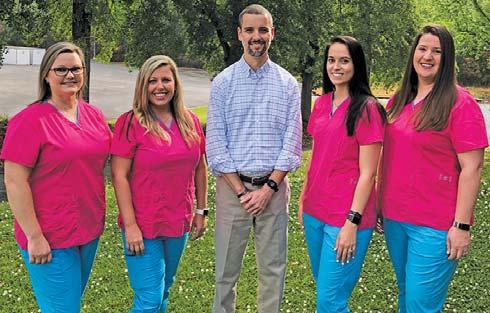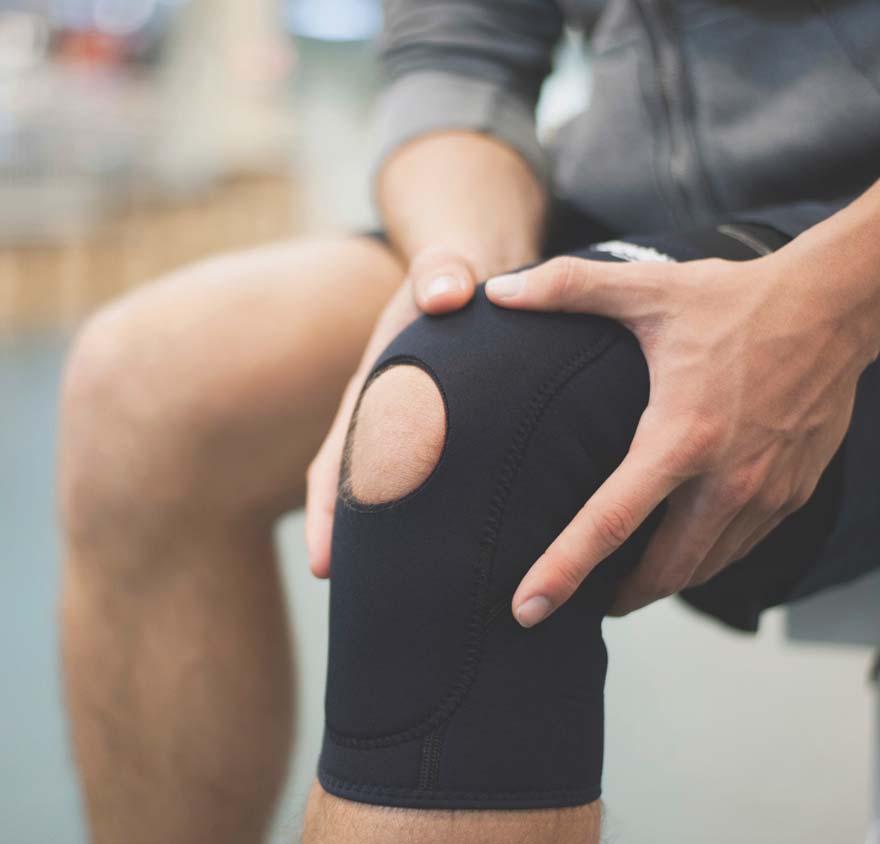
5 minute read
IMPROVED RECOVERY
Improvedmproved recoveryecovery Surgeon uses robotics in surgery
An illustration of a knee implant used in a full replacement surgery and an image of a patient’s knee are displayed on the monitors.
Advertisement

STORY BY JOYANNA LOVE | PHOTOS BY JOYANNA LOVE
Medical technology has given doctors better tools for serving their patients.
For St. Vincent’s Orthopedics surgeon Dr. James Worthen, robotics has offered an improved way to do knee replacement surgeries.
Worthen said using robotic technology makes the surgery more precise with less recovery time required. “The robotic technology gives us an ability to be more exact with some of our steps in the operation in a knee replacement,” Worthen said.
This precision means “better function, faster recovery, which I have witnessed, and, hopefully, better longterm results with possibly longer lasting replacements,” Worthen said.
James Worthen















Dr. James Worthen hopes to one day offer full joint replacement surgeries at St. Vincent’s Chilton, but for now patients can have their pre-operation and postoperation needs taken care of there.






“The technology has made our surgery more precise and reproducible,” Worthen said. Worthen has an office at St. Vincent’s Chilton and has expanded the services offered there, so that Chilton County patients only have to go to the Birmingham office for a full replacement knee or shoulder surgery.
Terri Connell with the Clanton office said initially patients had to go to Birmingham for CT scans and much of the preoperative things needed.
“Now, we have gotten to where we can do the lab tests, EKG and CT for surgeries,” Brenda Cleckler, LPN coordinator for the Clanton office, said.
In addition to the pre-surgery elements needed for total knee replacements, St. Vincent’s Orthopedics Clanton office can also handle tendon repair, meniscus repair and minor surgeries

for knees, hands and ankles. “With Kendall Roper (PA-C) there (in Clanton),” Worthen said. “We offer someone at least four days a week to handle orthopedic injuries and issues.”
After a surgery, physical therapy and post-surgery care can be done in Clanton. The Clanton office had 129 patient office visits in the first two and a half weeks of 2020. In that time, there were about 10 full knee replacement surgeries. Pain and injuries are the main reasons patients come to the orthopedic office.
“If it is arthritis, it is usually something that they have been dealing with for a while,” Worthen said.
Some of his patients come to the office as a referral from another physician.
Arthritis is the main reason someone would need a total joint replacement surgery. Other treatments are
The left image shows a shoulder with arthritis.




Dr. James Worthen works in the St. Vincent’s Orthopedics office in the outpatient wing of St. Vincent’s Chilton.



offered by the office to treat arthritis, but Worthen said when the joint deteriorates to a certain point, nothing else can be done, except to replace the joint.
“We replace the surfaces that have broken down,” Worthen said. “By replacing the surfaces, we made a broken gear (into) a new gear that works.”
He said a knee or shoulder surgery can allow a patient the mobility “to do things they haven’t done in a long time.” Knee replacement surgery is much more common than shoulder replacement surgery.
“The type of approach I take with the knee allows for a faster recovery time where it doesn’t involve one of the main tendons of the knee, meaning avoiding the quadriceps,” Worthen said. St. Vincent’s Orthopedics is exploring opportunities for expanding the use of robotics in the practice to include in shoulder surgery. “It should be available in the next few years,” Worthen said.
Even before this technology is available, Worthen already uses a unique approach to shoulder surgery.
“For shoulder replacements, I do a special kind of surgery that in minimally invasive and does not go through tendons that are routinely cut for replacement,” Worthen said. “I do not cut the tendons, so that allows for faster recovering and less of a chance of patients hurting themselves during the recovery.”
An average month can see five to 15 complete knee replacement surgeries for Clanton patients.
A long-term goal for the Clanton location would be to make full joint replacement surgeries available onsite.








